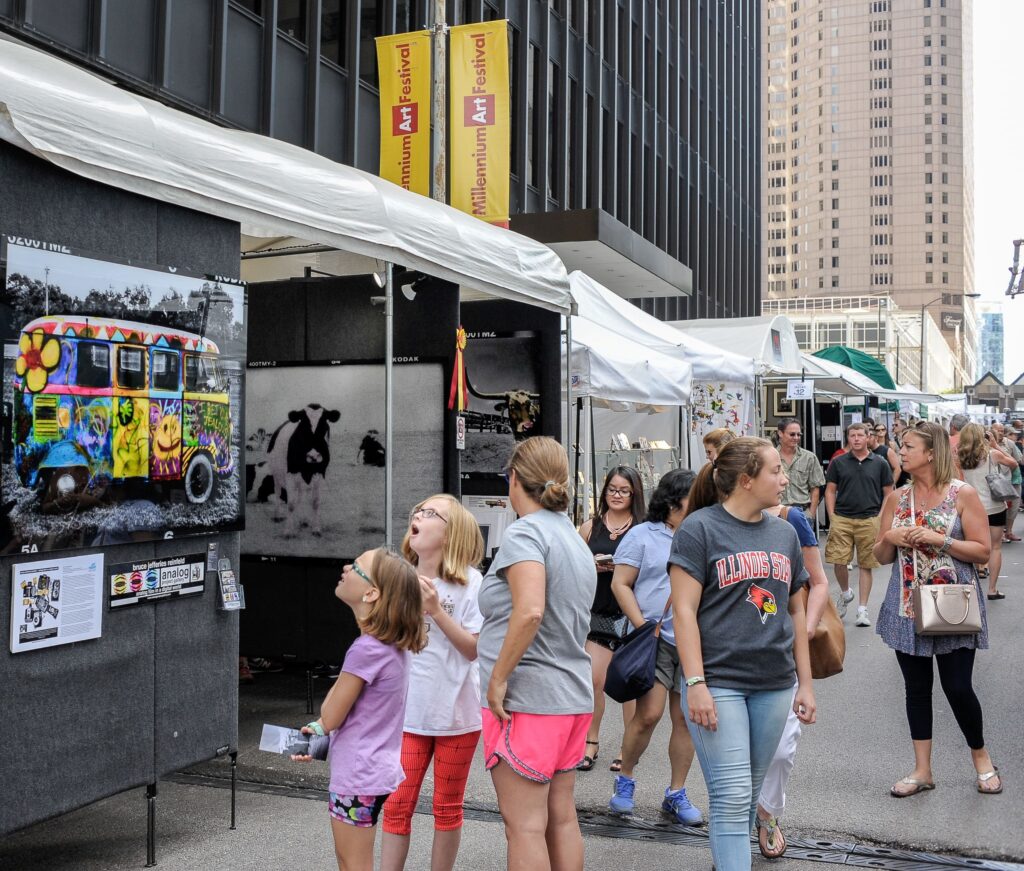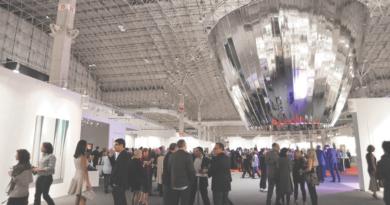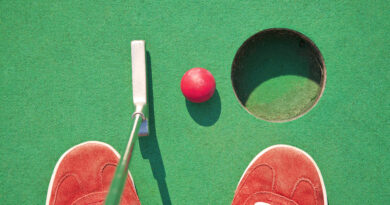Summer Festivals Adapt to New Normal Amid Pandemic Shutdowns
Of the many things Chicago does well—some of the most popular annual events, beloved by Chicagoans and visitors alike—are neighborhood art fairs. Taking over blocks and blocks of business districts in the city and suburbs, these festivals of visual art and artists are fantastic ways to celebrate summer, neighborhoods and Chicagoland, all in one fell swoop.
Unfortunately, the COVID-19 pandemic has impacted these lively festivals the same way it has impacted so many things throughout Chicagoland and the rest of the world. The arrival of spring usually brings the start of festival season, but Illinois’ shelter-in-place order has meant the postponement of virtually all of the festivals scheduled for the new season.
This setback hasn’t deterred Amy Amdur, however. Amdur is the president and CEO of Amdur Productions, the company behind Printer’s Row Art Fest, Wrigleyville Art Market, Glencoe Festival of Art and about twenty other visual arts events around the area. A champion of artists, she’s finding ways to support them during this time when festivals are on hold, and she’s already thinking about how to help them as a new normal emerges.
Amdur explains, “These people are microbusinesses–usually a one person operation–they don’t necessarily have retirement accounts or backup plans. Artists are artists because of their passion.”
On a very personal level, Amdur is taking time to speak with artists she works with about their challenges and their triumphs. Some are sharing that they’ve been able to use their time in quarantine to make new art. “One artist told me she created so many paintings that she has enough paintings for festivals through 2024,” says Amdur. Other artists are feeling blocked by the stress.
“What they all say,” reveals Amdur, “is that they’re worried. They sell their art. They’re full time artists. Without the festivals, they’re really hurting. They’re worried about how they’re going to make their mortgage payment and pay their bills.”
Fortunately, Amdur serves not only as confidante to these artists, she’s proactively tackling the challenge of helping them continue to cultivate their businesses.
In the short term, she’s helping artists sell their work online through Amdur Productions’ ArtZipper.com portal, and the usual commission charged by Art Zipper is being waived. Everything from jewelry to wall art to sculpture is available, so it’s a helpful tool for artists who would normally be able to sell their work in person.
As for the art fairs themselves, Amdur began collaborating with colleagues almost immediately after it became clear many festivals wouldn’t be able to go on as planned. Currently, most of the festivals have been postponed until later in the year or they’ve been scheduled as virtual festivals.
“The most important thing is safety,” says Amdur. That means adjusting the way art festivals function a bit, but the plans for that are already in the works.
“If we’re able to have festivals in person in the summer of 2020, our plans call for greater spacing between the booths,” she explains. “There’s going to be at least six feet between booths to help with social distancing.” Amdur also expects that the number of people allowed inside each booth at one time will be limited in order to minimize contact.
Some of the other displays people have come to expect at art fairs may also change. Flip bins–the displays that allow customers to flip through unframed art–may be eliminated because they’re considered “high touch” areas that could be unsafe. Likewise, Amdur expects that artists will move to touchless forms of payment such as Venmo or Apple Pay whenever possible.
Whereas performing arts and sports venues are struggling a bit to figure out how to hold events with social distancing in mind, arts festivals have an advantage.
Says Amdur, “For us, the things that make (art shows) easier than theater or a music festival or a football game are we can air out the show–space things out more. We can regulate how many people come in or out. We can also regulate the flow of traffic.”
She expects there will be lots of hand sanitizer available and fewer opportunities to congregate the way visitors have been able to in the past. Guests might also have to reserve a time to visit rather than simply show up as they’ve done in the past.
Amdur wants to reassure visitors and artists, “We’re ready to do all those things, and we’ve thought through them.”
Of course, there’s the question of whether people will be ready to enjoy some of the events the way they have in the past once the stay-at-home order is lifted. She wonders, “Will the public feel comfortable coming to a show. How long will it take people to feel comfortable doing that again? Are they not going to come at all? I wish I had a crystal ball. That’s what I keep telling everybody.”
Crystal ball or not, Amdur recognizes the power that art can have as the city, nation and world begin to recover, and she’s doing her level best to be ready when Chicagoans are able to gather again.
“The visual arts have always been a reflection of the times, and I think as people have been injured on so many levels, the arts will help people regain a sense of normalcy.” And it’s safe to say that’s a welcome benefit we all can appreciate.
For more information about new dates for arts festivals and virtual shows, visit amdurproductions.com




